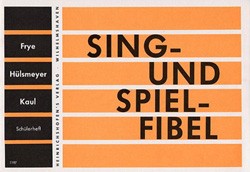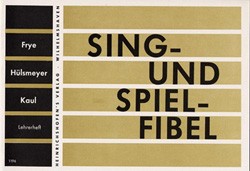No results were found for the filter!

Salomone Ebreo Rossi
15 Canzonetten aus dem Jahr 1589 Beschreibung: Diese Ausgabe wurde für zwei Sopran- Blockflöten und eine Alt-Blockflöte (oder SST oder SSB) eingerichtet. Andere Zusammenstellungen von Blockflöten oder anderen Melodieinstrumenten können an ihre Stelle treten, wenn die tiefste Stimm eimmer um eine Oktave unter den beiden höheren gespielt wird. Inhalt: 1. Cercai fuggir amore 2. Rose, gigli e viole 3. Amor fa quanto vuoi 4. Se gl'amorosi sguardi 5. Correte amanti a miei sospiri 6. Non voglio più servire 7. Scherzan intorno i pargoletti amori 8. Se'l Leoncorno corr'al casto seno 9. Ahi chi mi tien il core 10. Voi che seguite il cieco ardor de Venere 11. Donna, il vostro bel viso 12. Io mi sento morire 13. Vattene pur da me, cruda, lontano 14. I bei ligustri e rose 15. Torna dolce il mio amore
Mehr €12.80 *

Norbert Linke
Frisch auf ins weite Feld Inhalt: 1. Als ich einmal reiste 2. Auf, du junger Wandersmann 3. Das Wandern ist des Müllers Lust 4. Es, es, es und es 5. Frisch auf ins weite Feld 6. Horch, was kommt von draußen rein 7. Im Frühtau 8. Jetzt kommt die Zeit, dass ich wandern muss 9. Nun ade, du mein lieb Heimatland 10. Schön ist die Welt 11. Was noch frisch und jung an Jahren 12. Wem Gott will rechte Gunst erweisen 14. Wir zogen in das Feld 15. Wo soll ich mich hinkehren 16. Auf der Lüneburger Heide 17. Ich armes welsches Teufli (Kanon zu drei Gruppen) 18. Muss i denn zum Städtele hinaus 19. Wohlauf in Gottes schöne Welt
Mehr €7.90 *

Herbert Connor
Hirtenlieder und Tänze aus Jämtland in Schweden Inhalt: 1. Hirtenweise 2. Sennerlied 3. Marsch 4. Polska 5. Stolze Signe 6. Tagsüber bei der Arbeit 7. Das Lied vom Ritter Falkenstein 8. Es gingen zwei Jungfrau'n 9. Lebt wohl, all ihr Freunde 10. Wiegenlied
Mehr €11.00 *

Hans Gerle
Spielstücke für vier Blockflöten, Heft 2 Inhalt: 1. Artlich und schön 2. Ich schwing mein Horn 3. Hors de plaisir 4. Licite 5. Ce fut amour 6. Si jai pour vous 7. Amissofre 8. Ein gut geselle
Mehr €7.50 *

Hans Gerle
Spielstücke für vier Blockflöten, Heft 1 Inhalt: 1. Ich clag den tag 2. Mein fleiss vnd müe 3. Mein selbs bin ich nit meer 4. Das ist ein fug geen all stim auss dem Discant 5. Entlaubet ist der walde 6. Elslein liebes Elselein 7. Die Gugel 8. Mag ich hertz lieb erwerben dich 9. Ein Maydt die sagt mir zu
Mehr €7.50 *
Viewed


